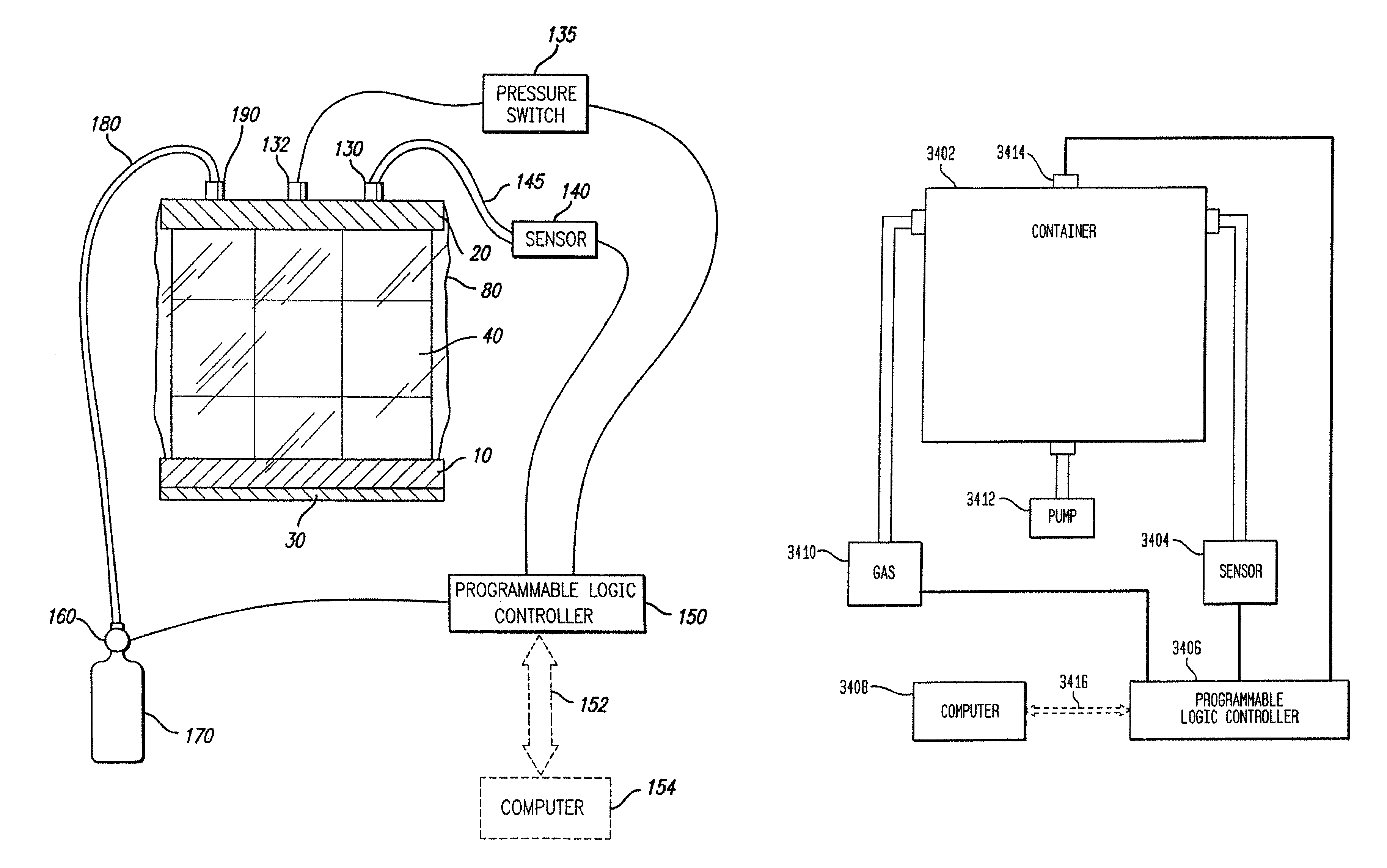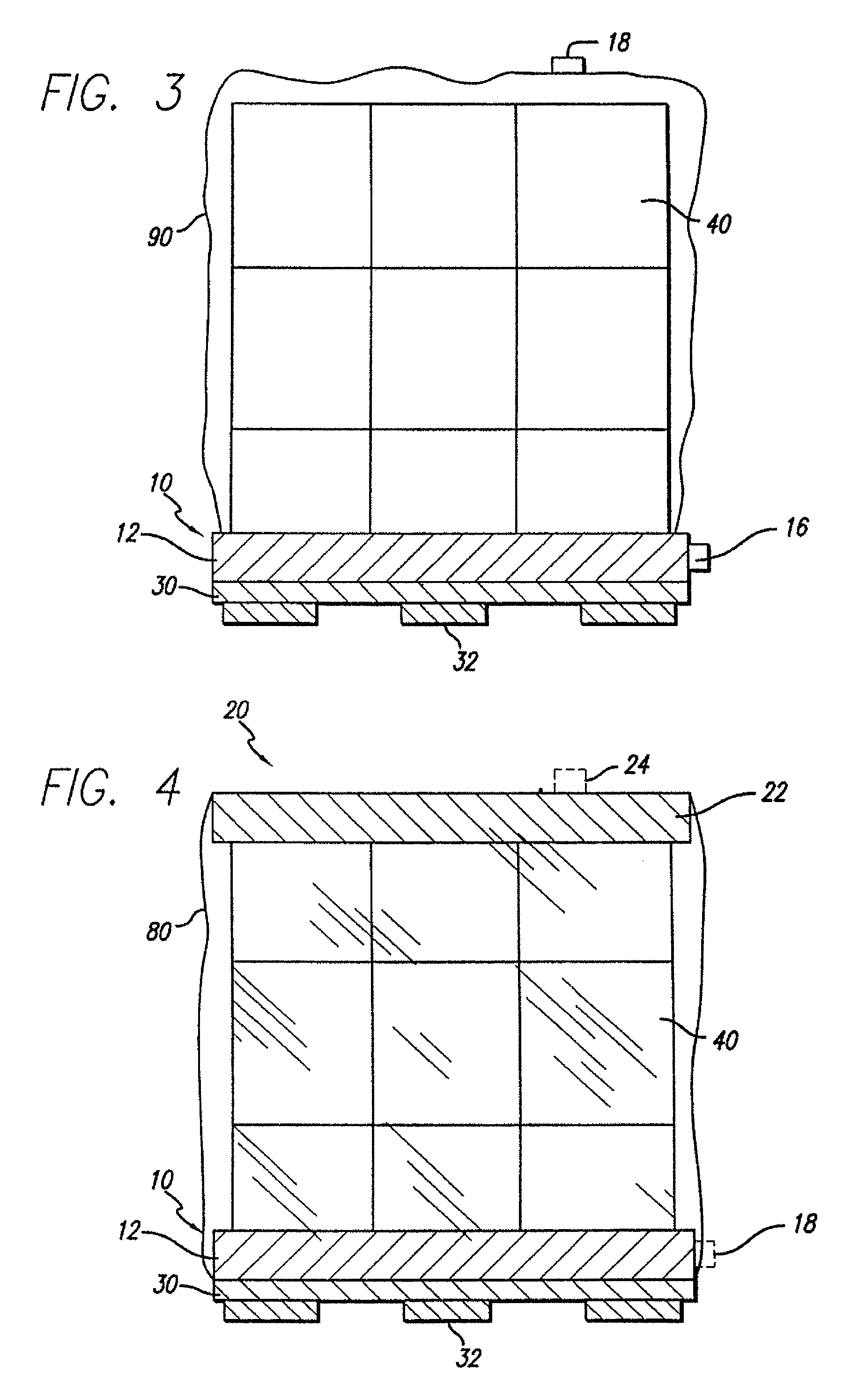Method for providing a regulated atmosphere for packaging perishable goods
a technology for packaging perishable goods and atmosphere, applied in the direction of packaging, meat/fish preservation using chemicals, packaging, etc., can solve the problems of difficult sealing of the bottom end of the cover, difficult to completely seal the enclosure, and damage to perishable or environmentally sensitive goods
- Summary
- Abstract
- Description
- Claims
- Application Information
AI Technical Summary
Benefits of technology
Problems solved by technology
Method used
Image
Examples
Embodiment Construction
[0061]The invention is described in detail below with reference to the figures, wherein like elements are referred to with like numerals throughout. In accordance with the present invention, a method and apparatus for creating a sealed enclosure around perishable or atmosphere-sensitive products for storage and transport (e.g., palletized goods), introducing a desired atmosphere into the sealed enclosure, and optionally maintaining a controlled atmosphere within the enclosure during transportation of the goods, is provided.
[0062]FIG. 3 illustrates a side perspective view of one embodiment of the invention that includes a base cap 10 positioned on top of a pallet 30. As shown in FIG. 3, the pallet 30 typically includes lifters or pegs 32, which raise the bottom surface of the pallet 30 off the ground. This keeps the goods 40 away from contaminants that may be on the ground and further facilitates machinery, such as a forklift, to lift the pallet off the ground for transportation. The...
PUM
| Property | Measurement | Unit |
|---|---|---|
| pressure | aaaaa | aaaaa |
| shape | aaaaa | aaaaa |
| sizes | aaaaa | aaaaa |
Abstract
Description
Claims
Application Information
 Login to View More
Login to View More - R&D
- Intellectual Property
- Life Sciences
- Materials
- Tech Scout
- Unparalleled Data Quality
- Higher Quality Content
- 60% Fewer Hallucinations
Browse by: Latest US Patents, China's latest patents, Technical Efficacy Thesaurus, Application Domain, Technology Topic, Popular Technical Reports.
© 2025 PatSnap. All rights reserved.Legal|Privacy policy|Modern Slavery Act Transparency Statement|Sitemap|About US| Contact US: help@patsnap.com



